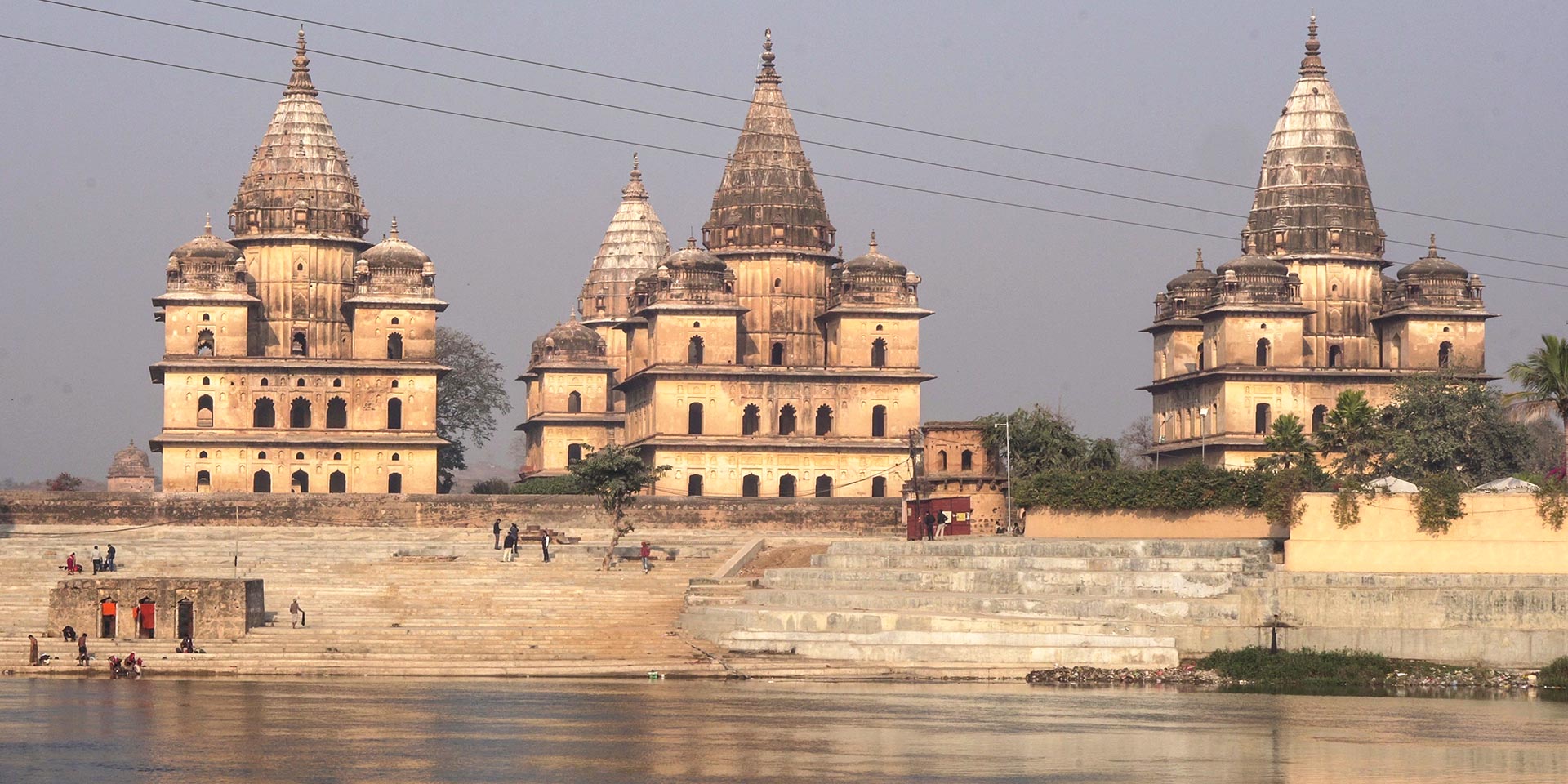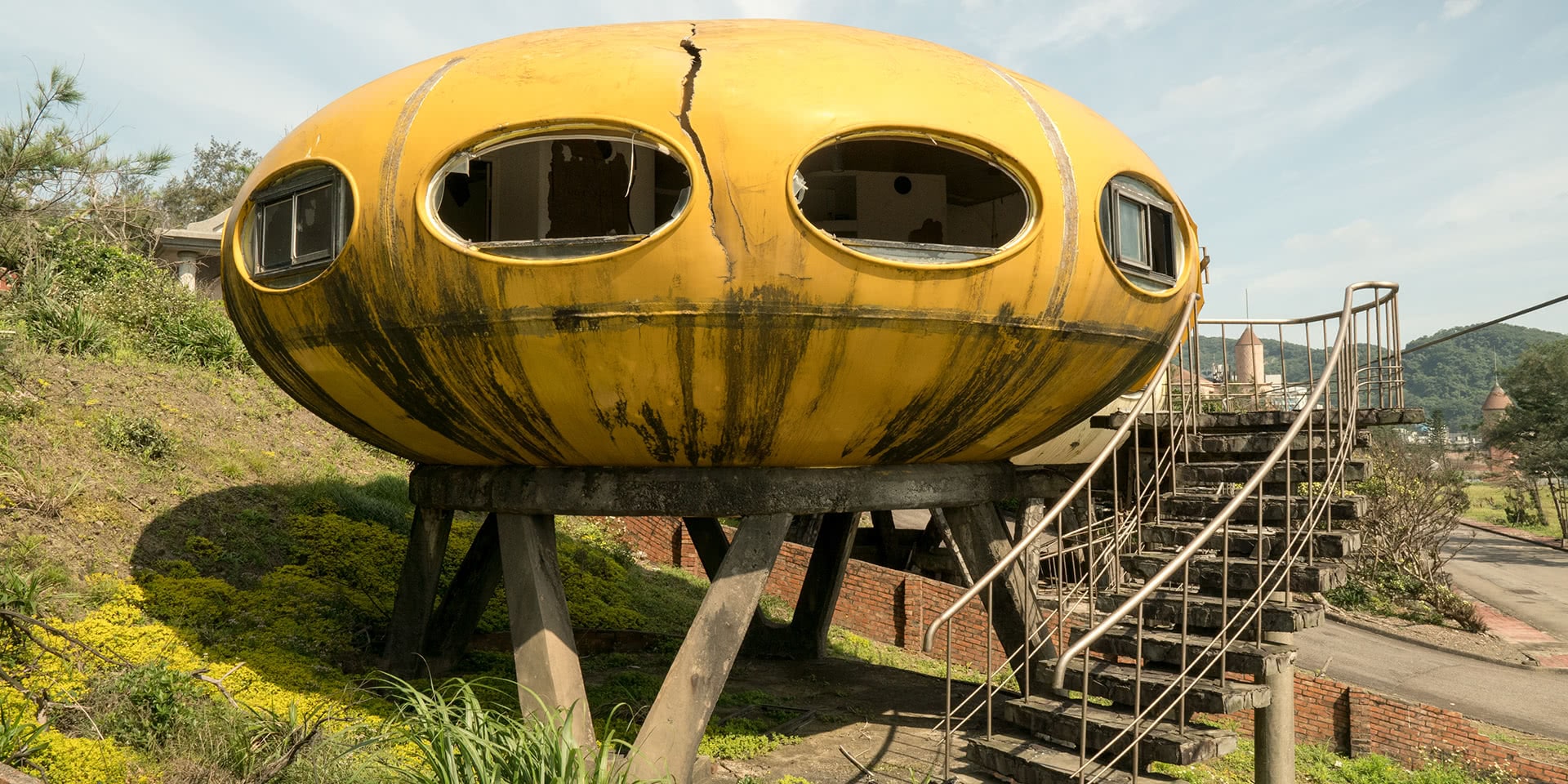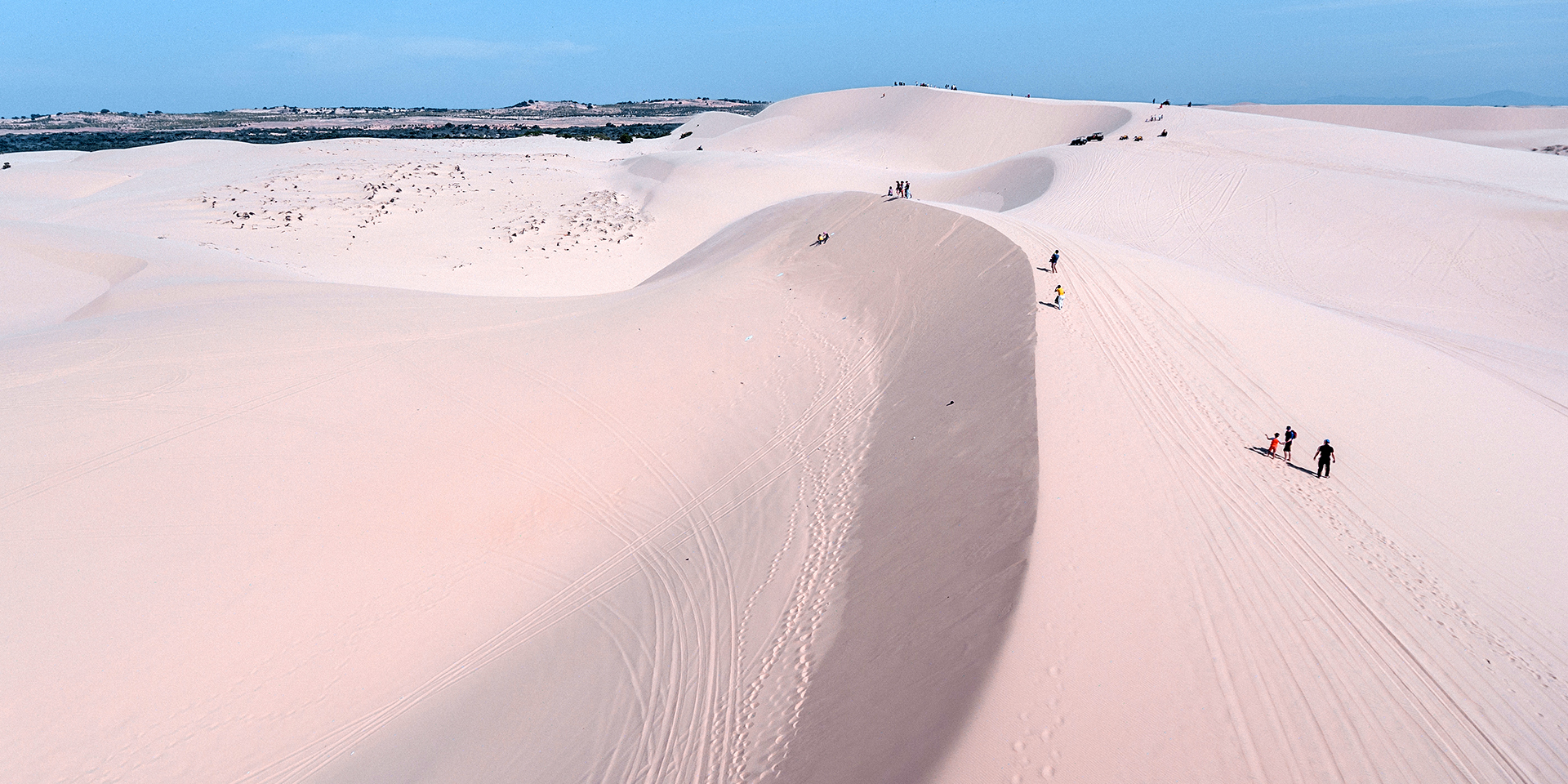
There’s just something quite distinct about Mui Ne – and it’s not just the sand dunes. Any regular visitor to Vietnam would walk into the red clay canyons and by the circular boats on the sea and conclude that there’s something very odd going on here. In many ways it is similar to other areas of coastal Vietnam – seaside, pastoral inland, markets; visually, however, when one digs a little deeper into this Southeastern Vietnam region, Mui Ne is truly unique.
Most people travel to Mui Ne for the beach, and considering my vantage from the Princess D’Annam Resort, that’s no surprise. Upon my visit the beach was both large and empty. The lighthouse and fishing boats complete the coastal panoply.
Mui Ne, the town, is actually quite busy, and certainly not conducive to a peaceful holiday. Just outside are the quiet beaches and, more importantly, the strange and expansive dragon fruit fields. I cycled through row upon row of bright green dragon fruit sticking up out of the tropical soil. Indeed, the whole of Binh Thuan Province is known for its dragon fruit production. Caught in the right season, the odd little fruits droop down from their curious cactus-y fronds.
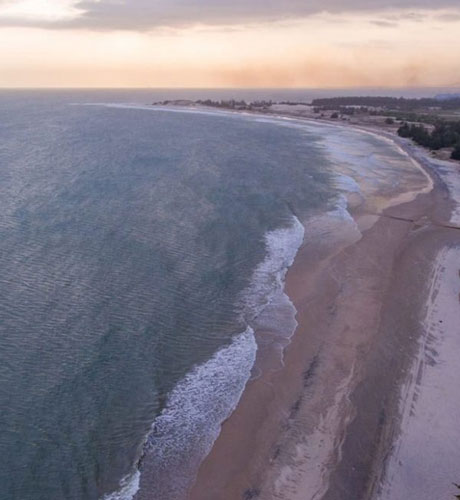
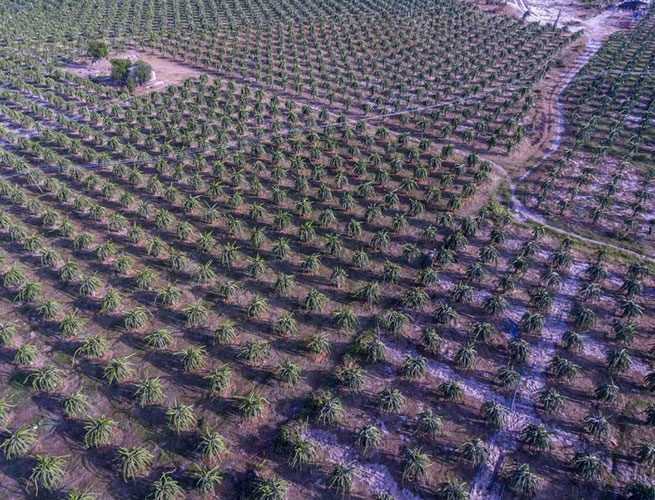
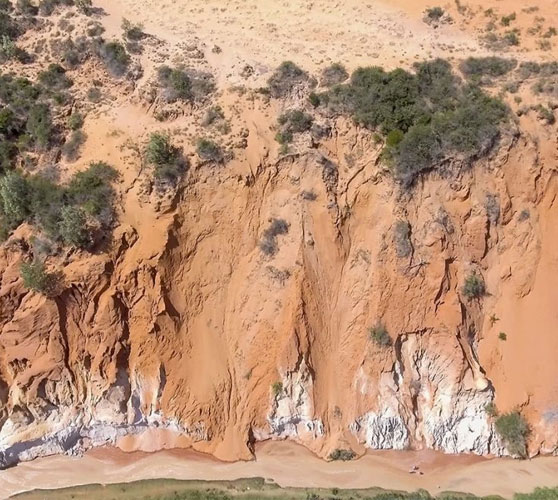
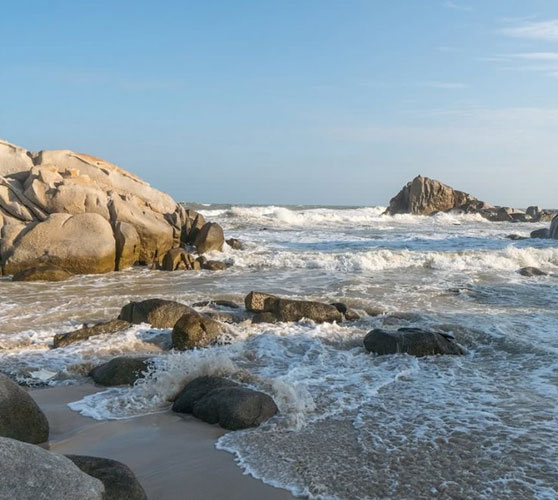
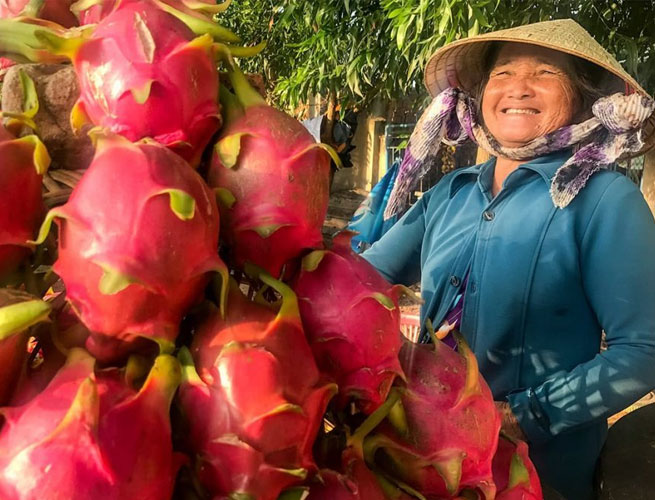
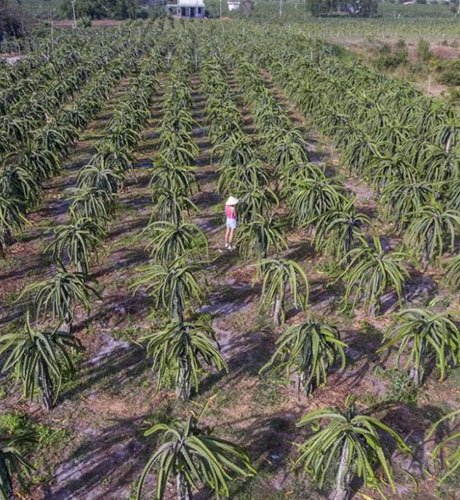
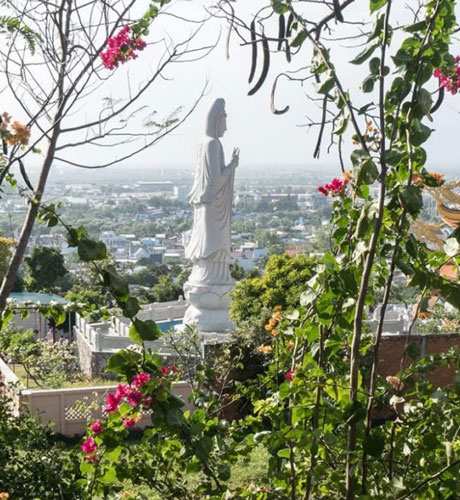
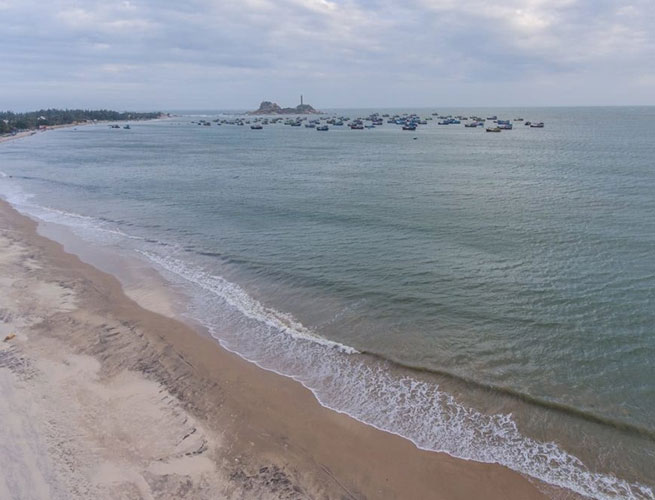
More picturesque perhaps are the fishing village, boats, and markets. Hundreds of fishermen make their living off the coast here from the calm seas and rich waters. The boats in all their flamboyantly painted style sit on the calm waters outside Mui Ne when they are not fishing, and plenty of vendors sell their fish right on the beach.
Quite curious to most visitors are the basket boats: round, deep boats that aren’t exactly friendly to the paddler. While they may not look that seaworthy, the basket boats are hard to sink and – in the hands of the right boatman – can be swirled and danced in a spectacular ballet.
But, in the end, the sand dunes are the most remarkable sight in Mui Ne.
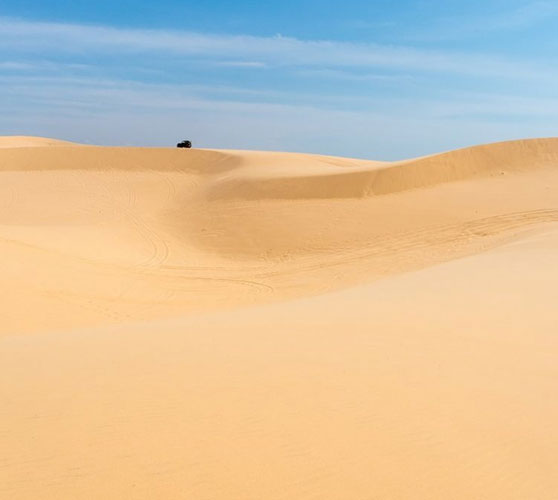


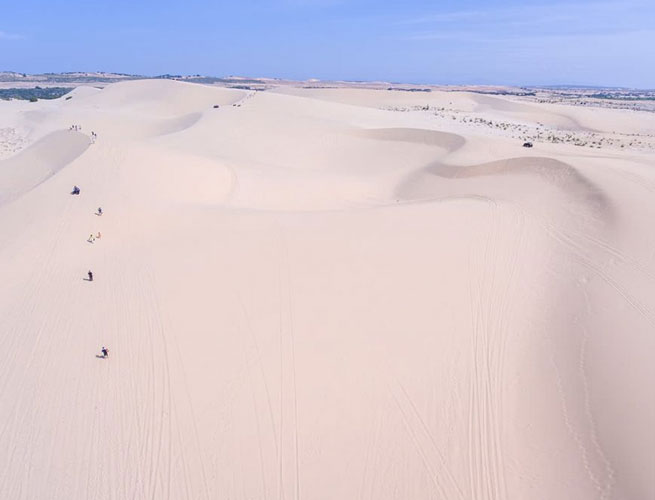

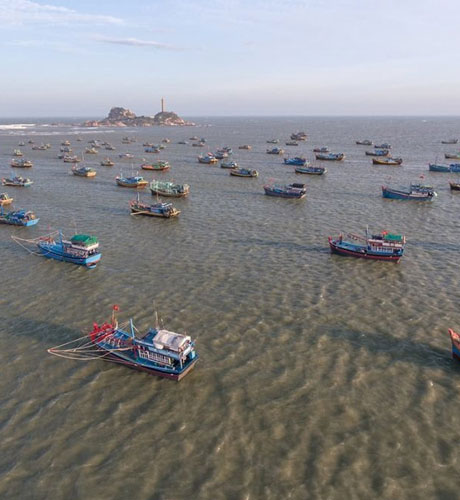
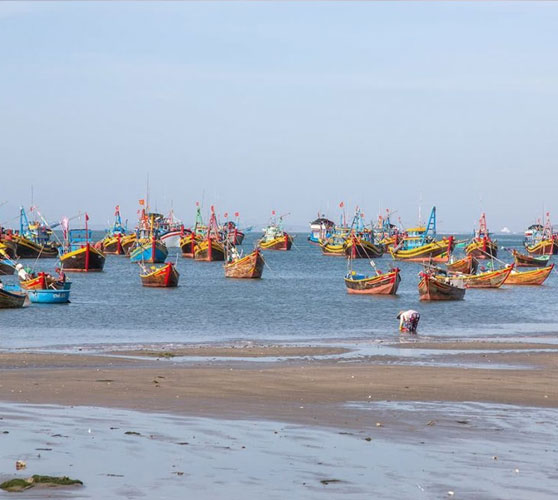
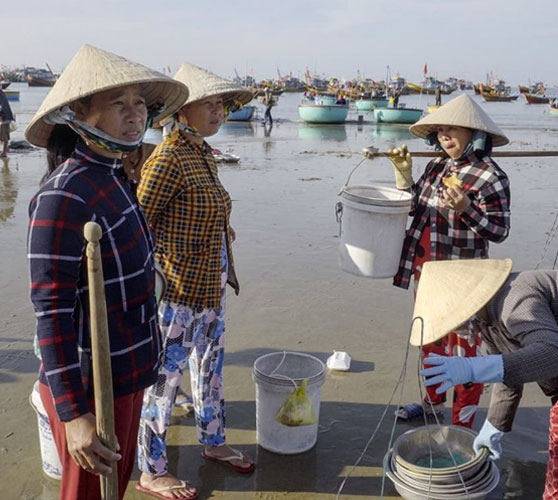
With the right perspective, the photos could be in any of the arid deserts of the east but are, in fact, are near a tropical Vietnam beach town. Even in this small of an area, there are two types of dunes.
The red dunes are easier to reach from Mui Ne proper. Like other dunes of this type, their creation stems from sea sediment swarmed over the land to build dunes, buttressed by plants rooting the sand in place. With the right shot, these dunes can look like the endless tracts of the South Gobi. However, keeping in mind that the white sand dunes are the most photogenic, a trip to the red dunes should be accompanied by a quick stop at the Fairy Springs, a small creek running through a colorful canyon.
The white dunes are the most popular attraction – their pale hue giving the impression something akin to the Sahara – though hardly as peaceful. With the tourists have come tourist attractions that plague both dune areas: ATV’s, cars, hot air balloons, and all of the dune-bashing equipment one might want.
Still, from the right perspective, Vietnam goes from beach to jungle to desert. These short stops are not the only sights to see in Mui Ne; I was unable to see the famed salt farmers of the region and hope to return to do so. If Mui Ne proves one thing, it’s that, as a travel destination, Vietnam always has more.


